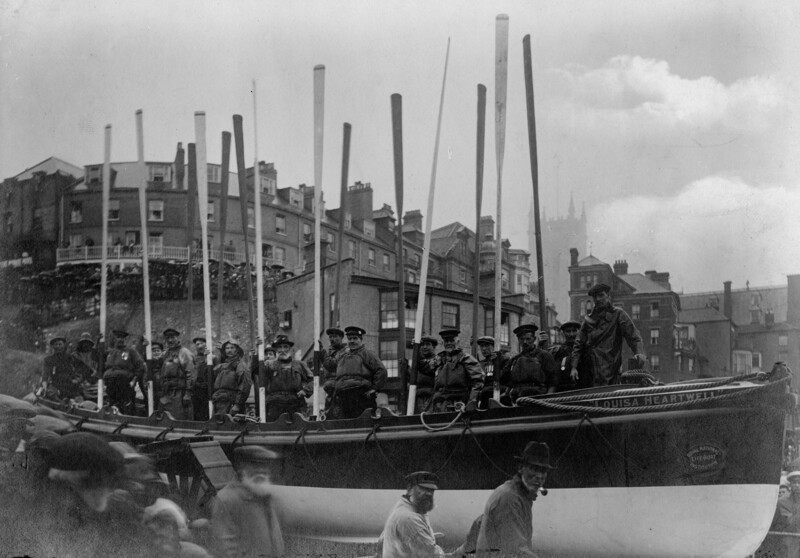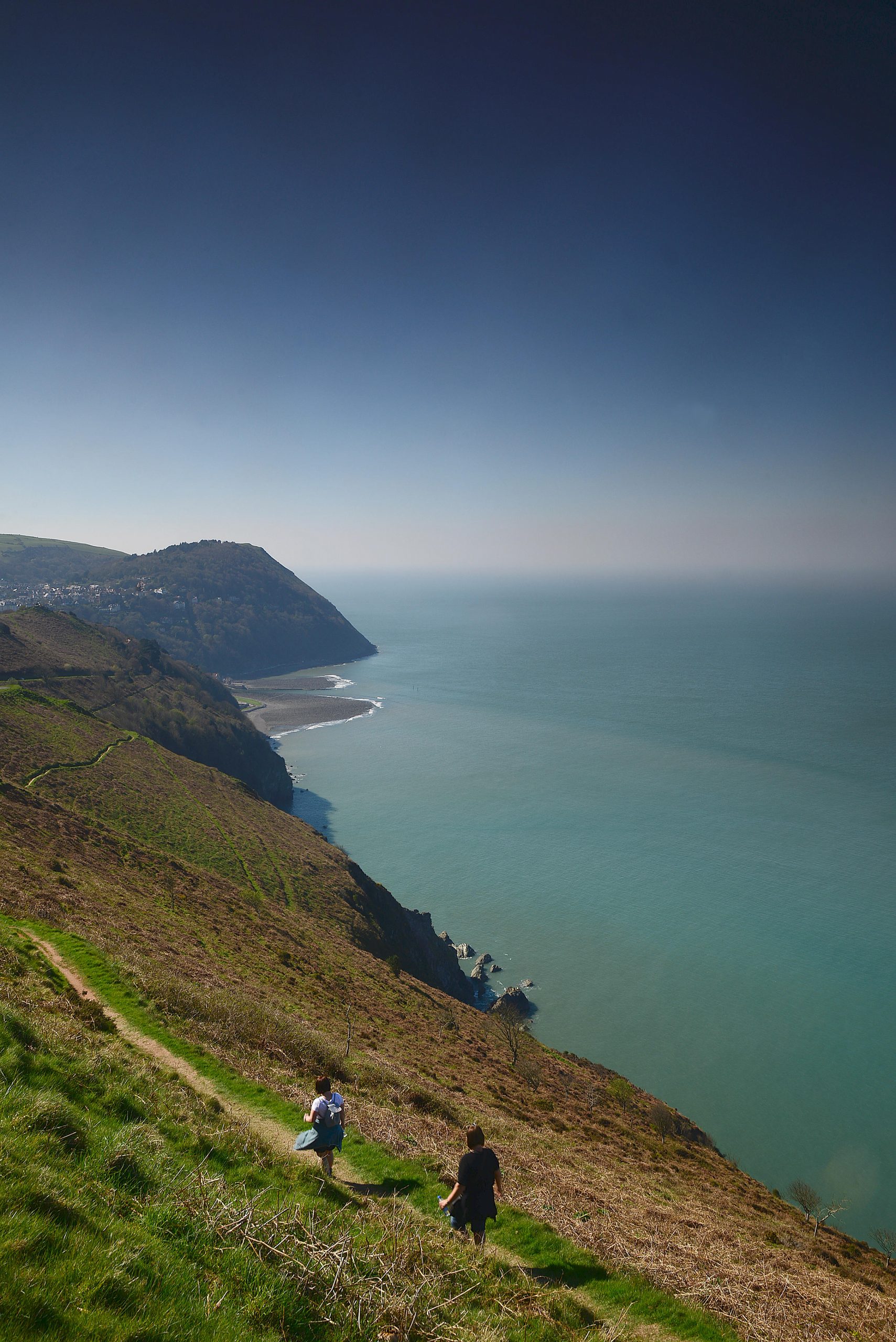Curious Questions: Why was a lifeboat hauled 13 miles overland in the midst of one of the worst storms of the 19th century?
Martin Fone on the brave men of the RNLI, and the tales of Louisa and Forrest Hall.


There are approximately 168,850 registered charities in England and Wales, each in their own way shining light on a good cause. High up on the list of organisations I support is the Royal National Lifeboat Institution (RNLI) which celebrates its bicentenary this year, a landlubber’s recognition of the courage of those who have saved at least 140,000 lives at sea. 2024 also marks the 125th anniversary of one of the most remarkable rescues that the RNLI has ever undertaken.
Built and launched in Liverpool in 1883, the Forrest Hall was a three masted, iron hulled ship, 277 feet long with a gross tonnage of 2.052, capable of carrying over 3,000 tons of coal in her hold. In early January 1899 she set out from Avonmouth Docks to Liverpool for a refit without cargo, only ballast, and with a skeleton crew of eighteen including five apprentice sailors instead of its usual complement of twenty-five, towed by a tugboat, the Jane Joliffe.
A ferocious storm force 9 gale blew up and the tug’s captain wanted to return to Bristol, but the Captain of the Forrest Hall, believed to be James Alliss, could not see the frantic signals because of the poor visibility. The tow rope then snapped when they were west of Lundy Island, the two vessels collided and the Forrest Hall lost its rudder.
Despite lowering its two anchors, as night fell on Thursday January 12, 1899, the Forrest Hall was driven by the power of the storm towards Porlock Bay and the low lying rocks off Hurlstone Point. By this time the Jane Joliffe had lost sight of it and as they later found some damaged steering components floating on the water, assumed that it had foundered on the rocks.

Meanwhile, the crew of the Forrest Hall fired off distress rockets at regular intervals in the hope that they would be seen by one of RNLI stations along the north Devon coastline. Eventually, Tom Pollard, the local coastguard and landlord of The Lower Ship Inn in Porlock Weir spotted one and sent his son to telegraph the Watchet lifeboat station for assistance.
The storm was so ferocious, though, that the Watchet lifeboat was unable to launch and so another telegram was sent, this time to the Lynmouth Lifeboat Station, received at 7.52pm, reporting that the Forrest Hall was drifting dangerously towards Porlock Weir.
Conditions were just as bad at Lynmouth, with houses, shops and the lifeboat station on the shorefront already flooded, and the crew concluded that they could not safely launch from the harbour.
Exquisite houses, the beauty of Nature, and how to get the most from your life, straight to your inbox.

It was then that the coxswain, Jack Crocombe, came up with the idea of taking the lifeboat, Louisa, overland to Porlock Weir which was sufficiently sheltered to allow a safe launch. After all, it was only a journey of 13 miles to be undertaken in one of the worst storms in living memory hauling a thirty-four foot long boat weighting 10 tons up and down Countisbury Hill with its 1 in 4 gradient over some 434 metres and a trek across Exmoor.
Undaunted by the prospects of this Herculean task, over 100 locals, including women and children, quickly assembled, a team of eighteen horses was attached to the lifeboat’s carriage, and the slow ascent up Countisbury Hill began. Some men were sent ahead to widen parts of the track across the moor and two men were assigned the critical task of keeping the lamps alight. The rest pushed the carriage to help the horses to cope with the hill.
At the summit, the first of a number of setbacks occurred; a wheel came off the carriage, fortunately, near the Blue Ball Inn. Some welcome ale was imbibed while the wheel was repaired. As the most difficult part of the task had been successfully accomplished, it seemed, the majority of the volunteers returned home, leaving just twenty, including the lifeboat crew of fourteen, to carry on.

Near Ashton the track was too narrow for the carriage to pass laden with its cargo. The men lifted Louisa off the carriage, manhandled it with the aid of skids through the narrow passage, and then placed it on the carriage once more. The descent was just as hazardous as the ascent, but once this was accomplished they met their next difficulty. A garden wall restricted the width of the lane to such an extent that the carriage could not pass. The problem was resolved by knocking down part of the offending wall.
Even on the relatively flat track between Porlock to the Weir, they found that the carriage was too tall to pass under a tree. Naturally, some of the group simply felled the tree. They finally reached the Weir at 6.30am where, despite being hungry and exhausted, the crew immediately launched the Louisa, and rowed out to the Forrest Hall, a journey that took around an hour, battling through ferocious winds and rough seas.
By this time the stricken ship had managed to drop its anchors but was still drifting slowly close to Hurlstone Point. Some of the lifeboat crew boarded it to await the anticipated arrival of two tugs, while the rest kept the Louisa close by but at a safe distance, a feat that required them to keep rowing continuously.
Shortly after daybreak the two tugs arrived and, after successfully attaching a rope to the Forrest Hall, towed it across the Bristol Channel to Barry, with the Louisa following on in case the ship encountered any further difficulties. They arrived at Barry at 6pm that evening and after being fed and resting awhile at the Seamen’s Mission, the lifeboatmen set out once more to row across the Bristol Channel, reaching home at 11.30 am on January 14th.
With all crew members safe and the Forrest Hall repairable, its grateful owner, a Mr R H Fry from Liverpool, donated £75 towards the cost of silver watches and chains which were presented to the crew members of the Louisa, Jack Crocombe and the second Coxswain, George Richards, receiving gold watches and chains. Each crewman also received £5, but this astonishing feat of endurance and derring-do was not marked at the time by the award of the RNLI’s “Victoria Cross” gold, silver, or bronze medals. The cost of making good the damage to property caused during the overland trek and flood damage to the Lynmouth lifeboat station came to £27 5s 6d.
On the centenary of one of the most remarkable feats in the RNLI’s history, January 12, 1999, the overland journey was re-enacted, albeit during daylight, by around fifty locals using four shire horses, although for safety reasons tractors were used to drag the replica boat up and down the steep inclines. The weather also played its part, being almost as foul as it had been a hundred years earlier.
Curiously, this was not the end of the ill fortune that dogged the Forrest Hall. On February 27, 1909, on a journey from Newcastle in Australia to Antofagasta in Chile with a cargo of 3,127 tons of coal, she ran aground on the coastline of Ninety Mile Beach on the far northern tip of the North Island of New Zealand, the only known case of a ship going ashore in calm seas and in clear daylight conditions, a subsequent inquiry recorded. All the crew were rescued and its wreckage can still be seen at low tide. There were suggestions that the captain, John Fenn Collins, had been experiencing epileptic fits on the voyage and had recklessly ignored the advice of his crew.
The RNLI has a proud record of fulfilling its mission to save lives at sea over two centuries. Long may it continue.
After graduating in Classics from Trinity College Cambridge and a 38 year career in the financial services sector in the City of London, Martin Fone started blogging and writing on a freelance basis as he slipped into retirement. He has developed a fearless passion for investigating the quirks and oddities of life and discovering the answers to questions most of us never even think to ask. A voracious reader, a keen but distinctly amateur gardener, and a gin enthusiast, Martin lives with his wife in Surrey. He has written five books, the latest of which is More Curious Questions.
